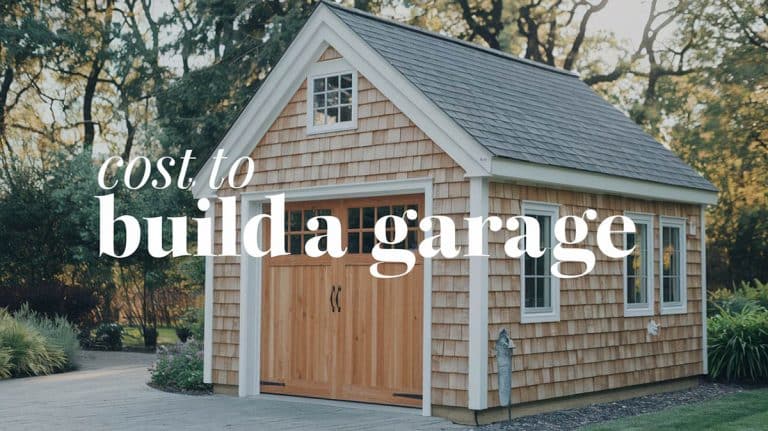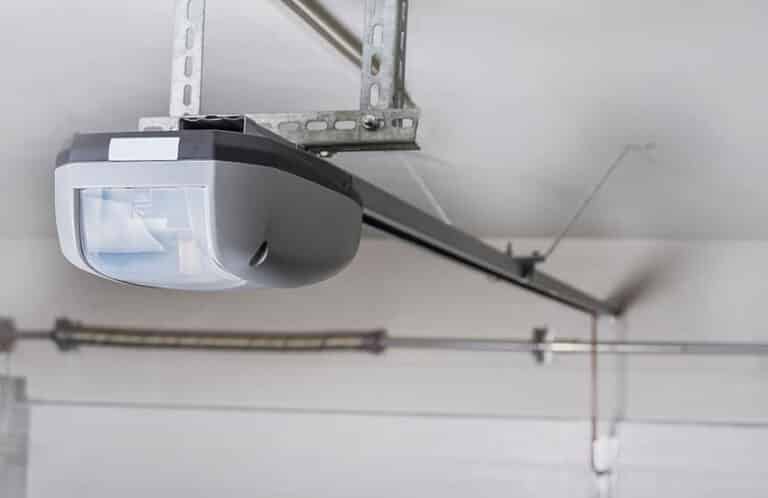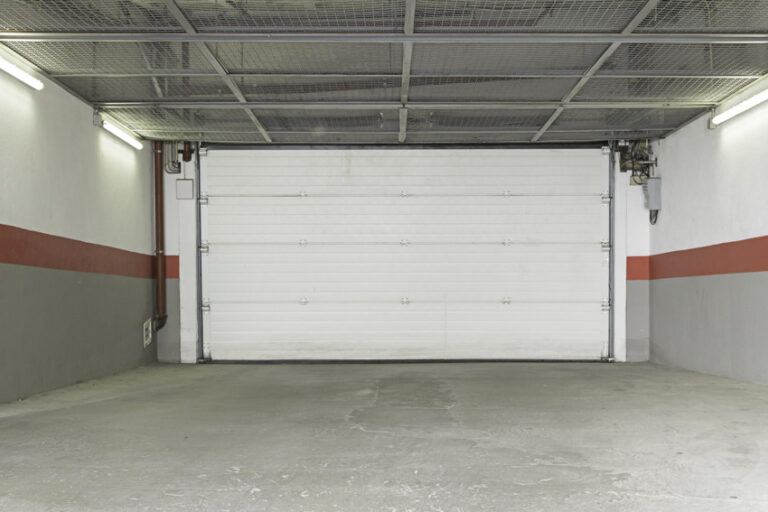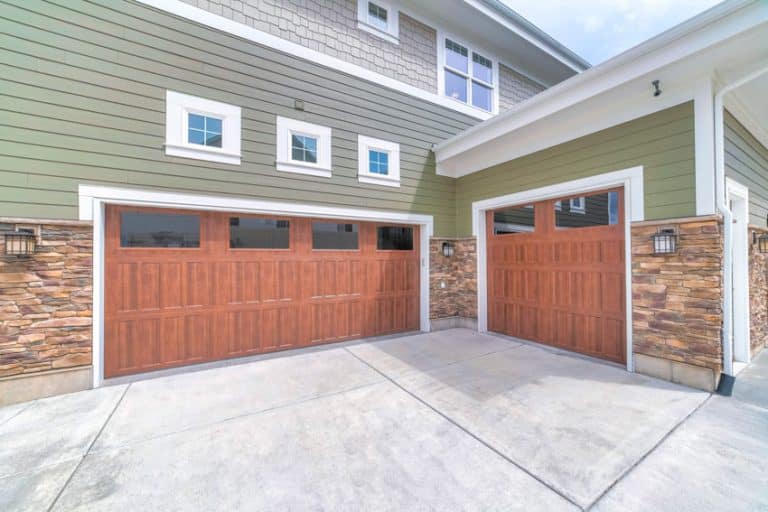How To Get A Climate-Controlled Garage
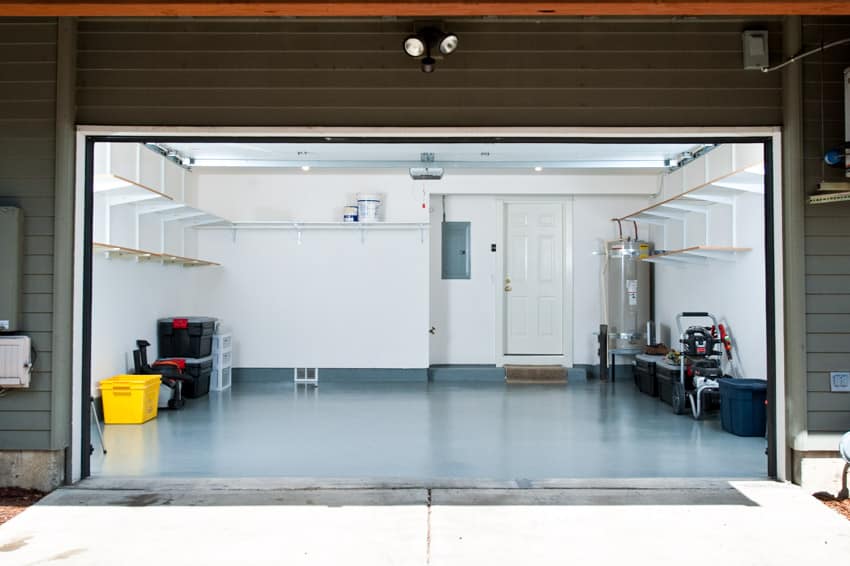
One thing that can be uncomfortable about garages, in general, is the lack of temperature control. It can get annoyingly hot during the summer months, and it can get absolutely freezing during the winter months. Without any type of climate control set in place for it, there is no so-called middle ground to go with.
Climate controlling your garage isn’t necessary if all you do in it is park your vehicles and stock up some stuff that you don’t want to keep inside the house. However, if you spend a lot of time there, some type of climate control will make your stay a much more enjoyable experience. There are a lot of smart strategies you can use to get some kind of climate control in the garage. We’ll discuss all of them in this article.
Why Do You Need Control the Temperature In The First Place?
To start off, why do you need it in the first place? Ensuring that you have climate control in the garage is essential in making sure that you get to prolong the lifespan of the tools and whatever items you keep in there. It’s also great for the architectural structure of your garage in general.
A classic example of this is the state of metal and wooden items that can come in contact with the cold and biting cold when there happens to be some sort of drop in the temperature. This can cause them to shrink and even malfunction.
This can be quite costly if you don’t preempt it and get ahead of the game. An extreme temperature rise, on the other hand, may cause certain elements to expand and shift around, affecting the space’s structural integrity.
Another risk you may run across is if you happen to be storing flammable items and other materials that can turn into kindling. It can heat up quickly and cause a possible fire, especially during the months when temperatures are extremely high.
You need climate control set up in your garage to keep it safe and protect your investments. It isn’t really just a matter of preference or comfort. It is a need, especially if you happen to be keeping a lot of important things or items of value in it.
In addition to protecting items in storage, it’s also about comfort. Having a climate-controlled space enables you to use the area more frequently no matter the season.
How To Climate Control A Garage
Climate controlling your garage space boils down to these few basic key elements. It isn’t as complicated as it sounds when you know what the basic essentials are.
Cooling or Heating Units: Getting heating and cooling systems installed is the key factor in regulating and stabilizing temperatures in the space. There are a lot of great options for you to consider when it comes to this.
Air Conditioning Window Unit With Heating
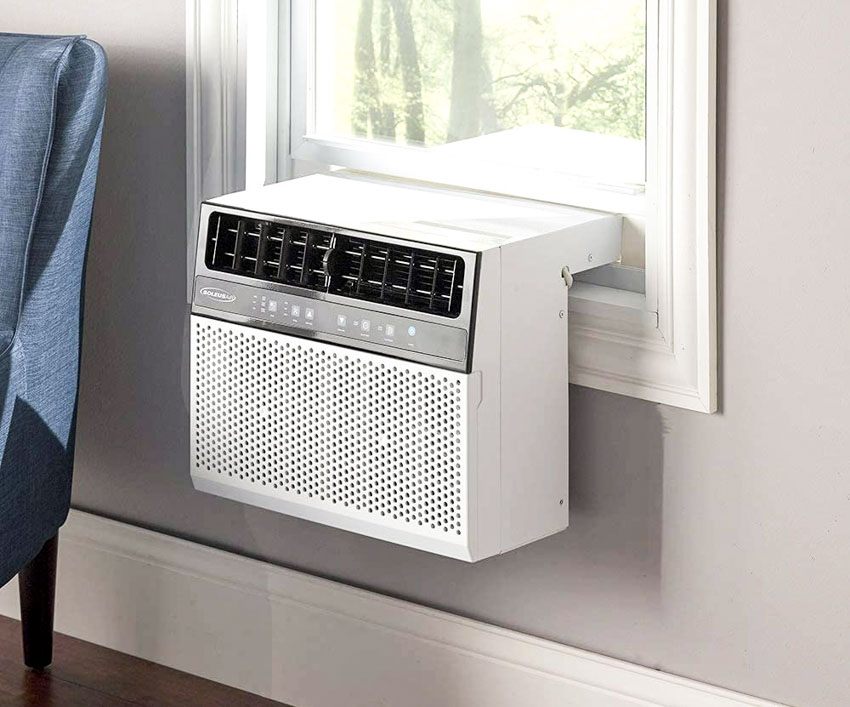
Air conditioner: You can go with a window type air conditioner or a portable one for the garage. A portable one is something that can be easily moved around. You can shift it from one area to the other depending on what you feel needs more cool air as you work inside.
A window air conditioner, on the other hand, can deal with extremely high temperatures in the garage area. It’s great for providing substantial cool air during the hot months and the best part in all of this is that you can replace a window-type heater as well during the winter months.
Portable Air Conditioner With Heater
For starters, a lot of people would raise an eyebrow right off the bat because they’re wondering if something like this will work in the first place. Fortunately, it will. A portable air conditioner will definitely help out in climate controlling your garage.
If you have a 1-car garage, the recommendation is that you should opt for a portable air conditioner with heater with at least 7,000 BTU (British Thermal Units). 2-car types of garages, on the other hand, might need something more (12,000 BTU) as the amount of space covered is something significantly larger.
Go for the upgraded units that also come with heaters so that you can use them during the hot months, but also use them during the cold months. It’s a practical device for all seasons all throughout the year.
Central Heating And Cooling System
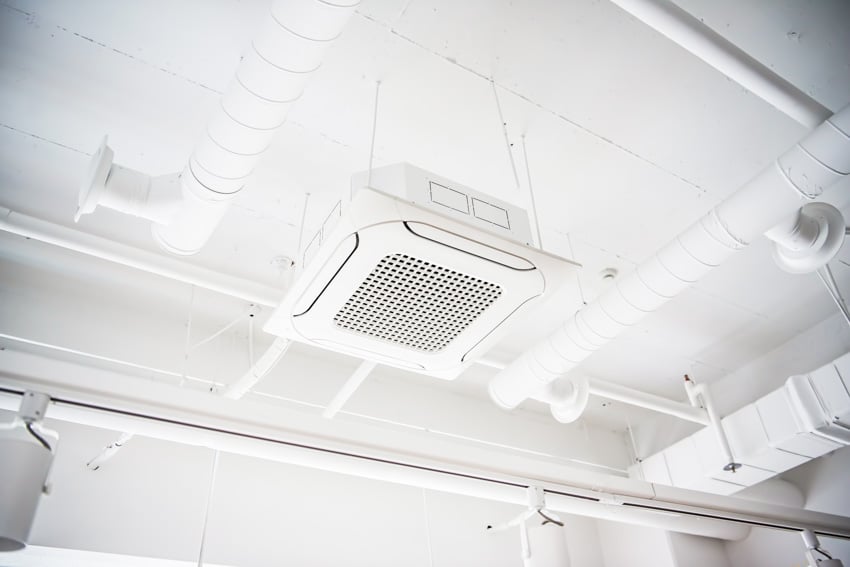
Combustion heater: You can start off with a vented combustion heater. This type of heater is actually safe enough for you to hang it from the ceiling.
It is also more suitable for outside air. What this device does is it filters out the exhaust products coming from your vehicles so that it doesn’t mix in with the air that you end up breathing indoors.
Electric heater: It’s best if you opt for electric space heaters in the garage. Although they aren’t recommended for heating up large spaces, they are absolutely suitable and cost-effective enough to use inside a garage. They can heat the space up faster and way better than your central heating system ever can.
Ductless HVAC System
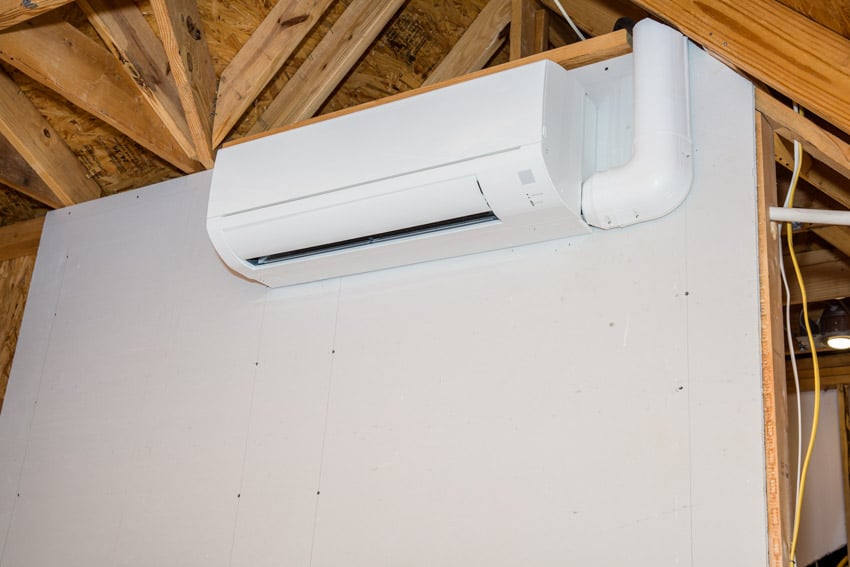
For a space as enclosed and as minimal as a garage, one thing to keep in mind is that they are usually built as separate structures from the main house. What this means is that they may not be connected to your home’s main HVAC system at all.
A smart alternative to consider is to go with a ductless HVAC system of its own instead. It’s usually much cooler but it serves the purpose of offering heating and cooling to your garage space.
Your garage isn’t usually an area that has ductwork as well as venting so going down the ductless route is the most sensible one to consider at the end of the day.
Dehumidifier
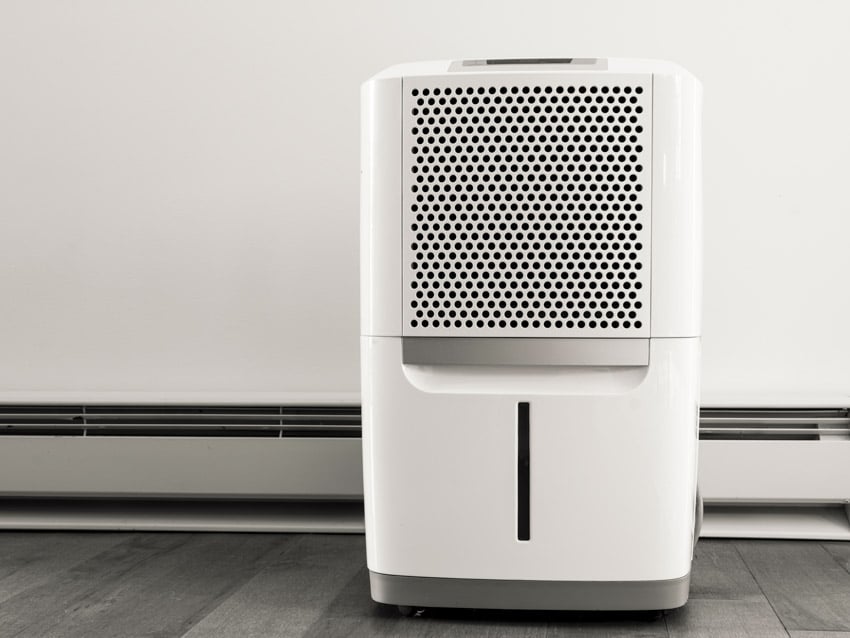
Humidity Control: This is the second essential element in getting a climate controlled garage. There will be a lot of times wherein your cooling or heating units can bring in a lot of humidity. This isn’t something that you would want to have in an overly enclosed space.
One way to combat this is for you to take advantage of dehumidifiers so that you can work on a little bit more humidity control for the space. There are some portable air conditioners that actually double over as dehumidifiers.
You can also consider a whole house dehumidifier to cover not only your garage, but your entire residence as well. This is a great add-on feature to invest in.
Install Insulation
Proper Insulation: The first thing you need to take care of is that your garage is insulated properly and thoroughly. If your space doesn’t come pre-insulated, now’s the time for you to get it done.
A lot of people seem to be under the impression that the entire purpose of insulation is to keep the cold air out during the winter months, but this isn’t always true. Proper insulation can also be pretty useful for keeping the hot air from entering the space during hot days.
Insulation needs to be installed in all of the openings or entryways where air can go in and out such as the doors, the windows, the interior walls, and even the ceilings. Get these points properly sealed and insulated and you will be able to effectively insulate your garage.
Does Insulating A Garage Keep It Cooler
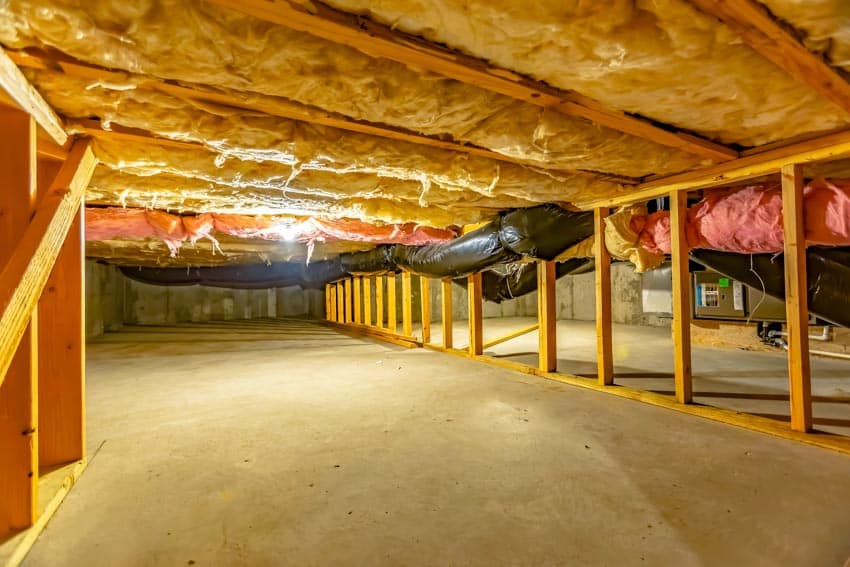
Yes, it definitely does. But it does so much more than that. But to expound on the question further, it’s a very strong yes. Insulating your garage really does ensure that you get to keep it cooler or keep the temperature down a bit.
If you’re planning on using your garage for something so much more than to just house your vehicles in, then the need to insulate it is even more important. It can help keep the area cool or warm depending on the external temperatures at any given time but more than that, it will allow you to have multiple uses for it.
Garages can come with a myriad of uses, from home offices, to home gyms, to playrooms, to workshops, and so on. Garages are also commonly used as storage spaces and keeping it insulated would mean that you’re protecting the items you have in there from pests.
You’re also shielding this space from other elements that might end up damaging them due to extreme temperatures seeping into the enclosed garage space.
Install An Insulated Garage Door
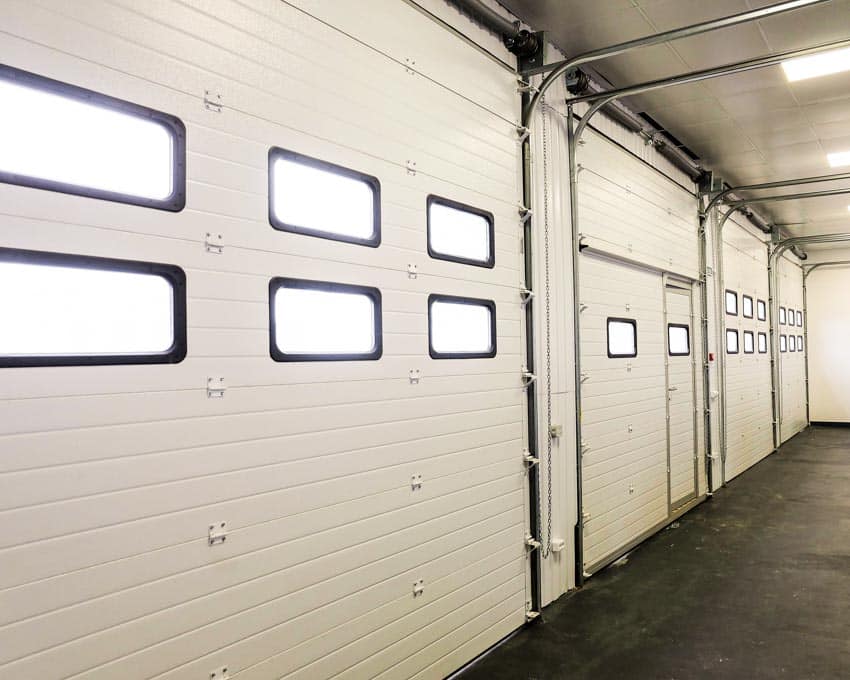
Setting up the proper garage door: There’s always the off-chance that your current door isn’t suitable for a climate controlled setting.
The type of garage door you have installed in there could be a major differentiator when it comes to the amount of temperature control you’ll be able to have for the space at the end of the day.
When you’re picking out a new door for this remodel, it’s important for you to make sure that you get to look out for models that have additional insulating features as well.
They can end up costing you more than regular doors upfront but the amount of money you’ll be able to save in the long run will be well worth the money.
Insulate Your Existing Garage Door
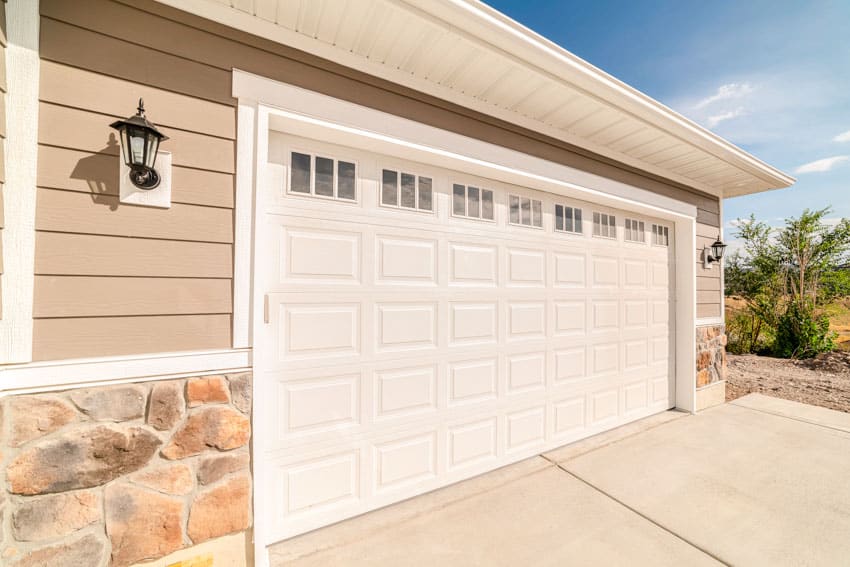
If you don’t have the budget to replace your existing garage door completely with a newer and insulated one (which usually costs more), another option on the table is getting the existing door insulated.
This one is more practical and more affordable. You can opt to get fiberglass insulation batts. Most doors are made out of metal and what that means is that you can put up an interior layer made out of these batts and this can help insulate it.
Take note though that the finished product doesn’t look visually appealing but with a few finishing touches, it should be OK especially if your main purpose is for functionality.
Another option is for you to get a DIY insulation kit for doors. They usually come pre-cut and complete with taps, fasteners, knives, gloves, and all the other tools you may possibly need to get your metal doors insulated.
Garage Thermostats & Controls
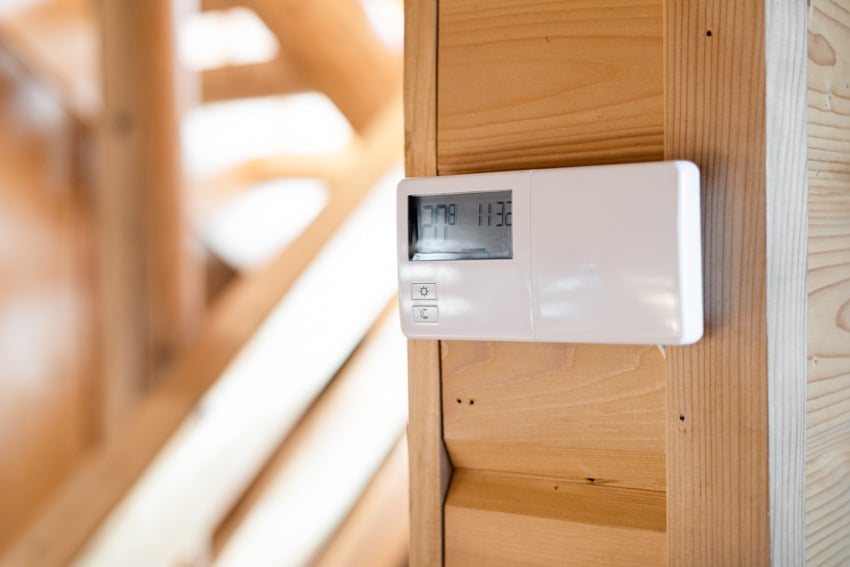
Garage thermostats and controls are both smart and efficient. If you ever want to introduce climate control, these are great investments to go for. To start off, you’ll be able to efficiently minimize energy costs.
This is the main reason why you need to go ahead and consider this in the first place. Go for something WIFI-controlled so that you will be able to adjust it even if you don’t happen to be at home.
You will also be able to track your energy usage, which makes your energy consumption even so much more efficient. And the best part is that they’re really easy to install and you can get them done almost right away, especially if you happen to be handy with the tools.
Smart Technology In The Garage
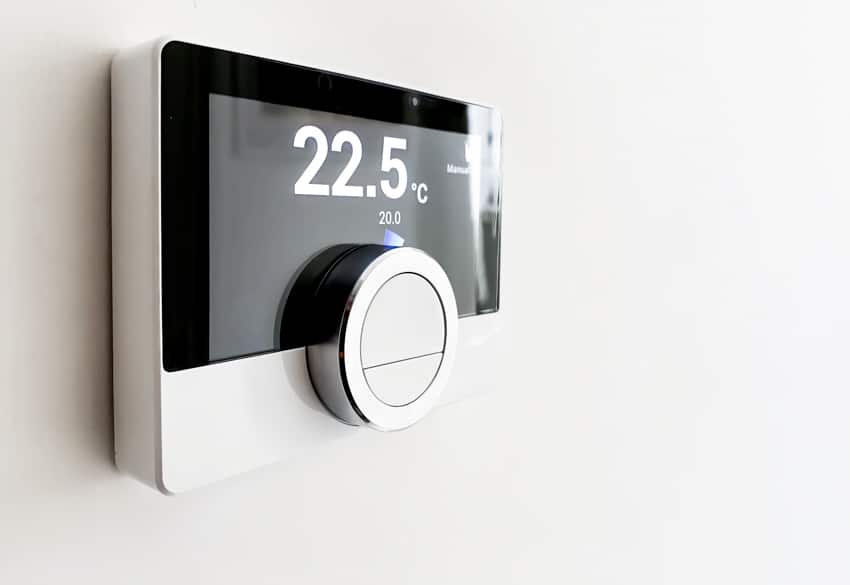
Smart technology in the home can provide extra provisions of security and convenience, and this can work towards the climate your controlling your garage as well. They can bring improvements that are unexpectedly exciting and convenient.
Their functionalities are automated, you can remotely control them via WIFI, and it makes it so much more efficient when it comes to climate control as you don’t actually have to get them operated manually.
How Much Does It Cost To Control the Temperature In A Garage
The average cost of climate-controlling a garage doesn’t come cheap. A reasonable range would be around $1000 to $4000. However, you need to understand that it can easily go much higher depending on the brand, the installation is complexity, and so much more.
Fortunately, you don’t have to be nailed on to any high rates you possibly can’t afford. You can always adjust and go for costs that are well within your budget or price range.
Best Way To Cool Your Garage
During hot days, it’s important to keep your home energy efficient as much as you possibly can. It will help keep the cool air in and will also ensure that you generate much lower energy bills month on month. The basics are pretty simple.
Make sure that you plug any possible air leaks to stop the indoor air from escaping, invest in efficient appliances (they may cost more on the front end, but they will save you more money in the long run), and make it a point to upgrade your hardware and fixtures from your doors, thermostats, and so on.
Old and faulty equipment could impact the ability to keep the cold air in, and this can make all of the difference by way of getting your garage cooler. If you happen to live in an area that’s really exposed to hot and scalding days, then you’ve probably taken a step or two towards getting your temperature stabilized.
Heat can become really unbearable left unchecked, but there are lots of efficient ways for you to keep your temperatures down. Keeping it down isn’t as expensive as you might think. There are lots of simple ways for you to get that done. Here are some things you can try out:
Open the garage door: This is the first thing you should do. It’s simple, it’s cheap, and it’s something that will allow the hot air that has accumulated inside to go out in huge amounts. This is a fast and easy way for you to ventilate your hot space.
Trapped hot air is terrible but if you give it a chance to escape, it can help make things so much easier. If your garage door is facing north, you can get a lot more cooler air because it brings in less direct sunlight so that means that the heat is also less.
However, even if your door isn’t facing north, just the mere act of opening it can bring in a slight breeze which may remedy the stifling heat inside. Avoid opening the door that connects to the home though as this will let your indoor cooled air escape out.
If you are worried about letting in insects or privacy you can buy a garage door screen that can help. They can range from inexpensive mesh materials for about $50 as a DIY project to $2000 retractable screen panels that are professionally installed.
Cool your vehicles before getting them parked: Driving your car would mean that you’re also heating it up. If you park it in your garage right away after you arrive home, the extra heat coming from the vehicles will heat up the air inside.
This means that all of that hot air will stay trapped inside your enclosed garage, and this can raise the temperature all throughout. Instead of driving straight to park your vehicle, it would be smart to leave your car outside in the driveway to cool off for a bit.
If you happen to have shaded types of driveways, your car should be able to cool off in a matter of a couple of hours or so. However, if you don’t have a shaded driveway and you’re somewhere that’s getting a lot of direct sunlight, leaving it out might heat it up even more. You should instead consider hosing your car down with some water to help it cool off before you bring it inside.
Get a ceiling fan installed: Installing a ceiling fan inside is another way for you to get it to cool down a little bit. It’s easier on the budget as most ceiling fans come fairly affordable and easily available.
It’s a simple yet pretty fast way of getting the temperature to cool down in your space. There are a few requirements though. You need to have a ceiling space of at least eight feet or so.
Anything lower may cause the fan to obstruct either your door or some taller vehicles you’re bringing in, so it wouldn’t be recommended. You also need to make sure that you take note of the dimensions of the ceiling blades before you actually shop around for them and get them installed.
Larger freestanding or even a whole house fan is ideal since they happen to cool the space faster but a ceiling fan that measures around 35 to 44 inches in diameter should be enough to cool the space down.
If your garage happens to come with windows, installing additional window fans can also help as they expel hot air out while, at the same time, bringing cool air in. See other ceiling fan alternatives here.
Declutter your garage: This sounds like a simple and basic enough solution but it will surprise you how much clutter is actually there. It’s the main area where people dump the stuff that they don’t really want in and around the house.
There can be boxes, and unused furniture, and they are usually stacked right on top of each other to save up on floor space usage. This can restrict the airflow and can cause the internal temperature to go up considerably.
Getting some windows and doors open, getting fans and so on, also won’t help as the air movement is blocked regardless. You need to give priority to creating negative floor space in your floor space as much as possible. Read more garage cleaning tips here.
Go over your old stuff and sift through what you would like to keep and what you would like to throw out. Get garage storage and shelving installed so that you can organize them and stack them right on top of each other. Overhead shelves are great as they only actually cover the vertical space.
Get an awning installed: Getting an extra rollaway awning installed can help as you can pull them down to block out the heat and the light coming from the sun outside during particularly hot days. Awnings are great because they can provide extra shade for your garage’s doors, making their temperature considerably cooler.
During the colder months, these awnings can be rolled up and put back into storage. There may be instances wherein you can put permanent awnings into your home’s architectural design. Although this may be a costly solution, it can increase your home’s curb appeal.
If awnings are out of the question for you, get trees around your parking area instead. They may take up more time, but they can turn out to be a much cheaper solution.
Improve your garage’s insulation: You can have batt insulation, blown in insulation, or even getting some new weatherstripping material installed. Invest in an insulated garage door as well.

